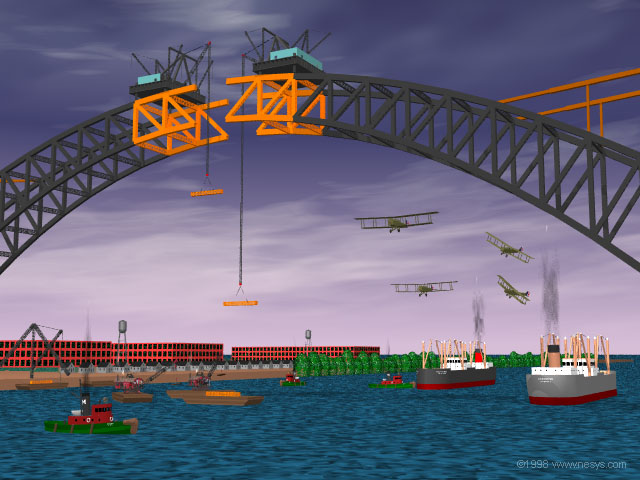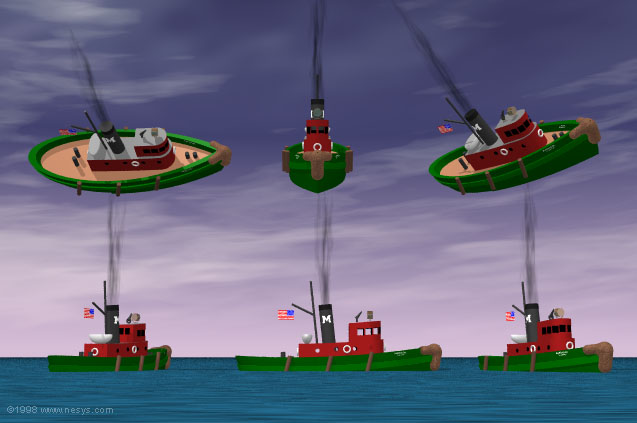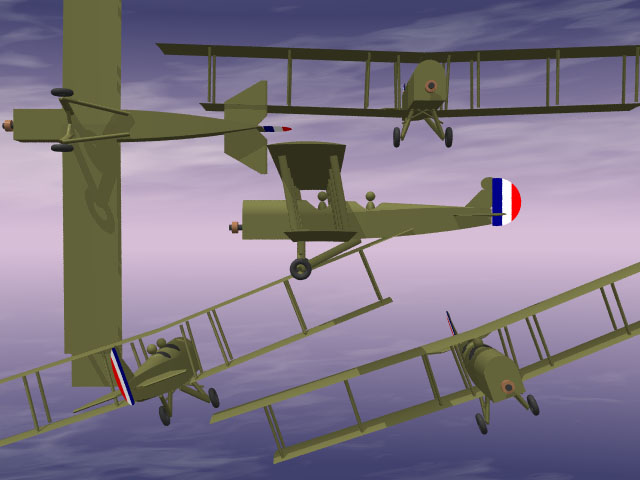Hell Gate Bridge, New York, 1915
Revised 28-Feb-1998

Arch Bridge
This is a project for the current IRTC.
The year is 1912, the year the Titanic sank.
Horses are still a big part of
the economy.
There had recently been a catastrophic collapse of a big bridge
being built in Quebec.
World War I was starting to be a concern...
...And two of the most conservative railroads in the world decided to build
a 1017 foot long free span bridge over a busy shipping channel,
named by early sailors for its treacherous tidal flows.
Oh, by the way, make it four tracks wide,
strong enough for trains much heavier than imagined in 1912,
and high enough that large ships can pass under it.
And, oh yes, no way to put supports in the
middle while you're building it,
so suspend it out from the banks while it's
being built,
with huge cranes perched on the uncompleted ends.
No Problem!
This is a model Hell Gate Bridge in New York City, while under construction in 1912-1917.
THE MODEL
Rather than place each member individually, I wrote an algorithm to produce
segments of a parabola,
using vector math to find the length and angles of
the diagonals.
The girders are not curved, they are straight segments.
The lacing of the girders is done with transparent GIF's,
which cuts down on the potential number of objects enormously,
although the most recent object count is 2066.
All dimensions are parameterized for easy adjustment, and the degree of
completion of the girders,
and amount of orange primer waiting to be painted
over with black paint can be adjusted.
The cranes were done for a previous IRTC, representing my childhood.
They're handy here, as they show how big the bridge structure is.
The tugboat model - all CSG

Curtiss R-2 - first flight 1915

The biplanes are pretty basic now, but will be finished up and added to the planes page.


After topping out, before painting is complete.
Note the addition of lacing on the girders.

Artwork (c) 1998 North East Systems